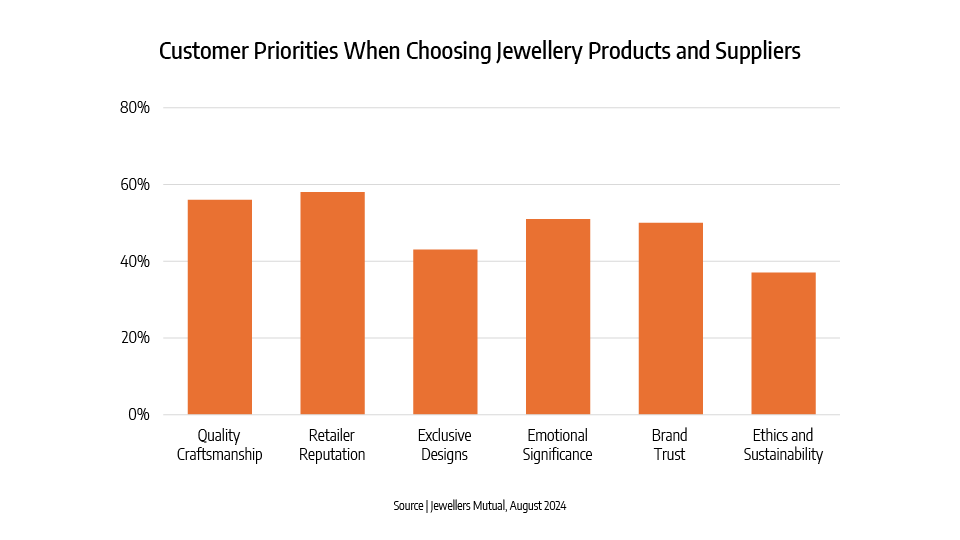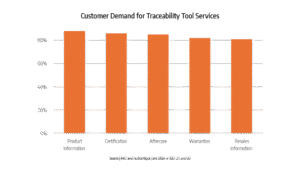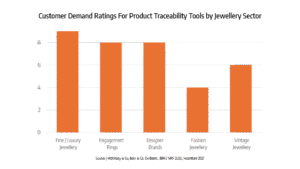More than half of consumers prioritise quality craftsmanship and retailer reputation when choosing jewellery products or suppliers, with emotional significance, brand trust, and exclusive designs also ranking highly. Ethics and sustainability, while important, were a lower priority in this context. (Source: Jewellers Mutual, August 2024)
Interpretation
Customers are making purchase decisions based on tangible product qualities and the perceived integrity of the retailer. This suggests that any tool or document presented during the buying process, such as a Digital Product Passport (DPP), must align closely with these priorities. A DPP should highlight elements that reassure buyers about quality, authenticity, and brand values.
Insight
Jewellery purchases are often emotional and meaningful. When customers seek reassurance about quality and reputation, they are not only protecting their financial investment but also validating the personal significance of the item. The need for confidence and clarity is heightened in high-value categories like platinum jewellery.
Implication
Retailers and manufacturers can use a DPP as a strategic communication tool. By including verified details on craftsmanship, sourcing, and brand story, alongside care instructions and service history, a DPP can directly reinforce the factors that customers value most. This positions the DPP as more than a compliance requirement; it becomes part of the brand experience.
Opportunity
There is a clear opportunity to design DPPs that go beyond technical specifications. Retailers who use DPPs to express their brand’s values, highlight artisan expertise, and demonstrate product integrity can deepen customer trust and differentiate themselves in a competitive market.
Recommendation
When implementing DPPs, ensure they clearly communicate three things: the story of the product’s craftsmanship, the credibility of your brand, and the reasons a customer can trust the purchase. Use plain language, avoid jargon, and consider visual formats, such as timelines or quality badges, to make the information intuitive and engaging.













